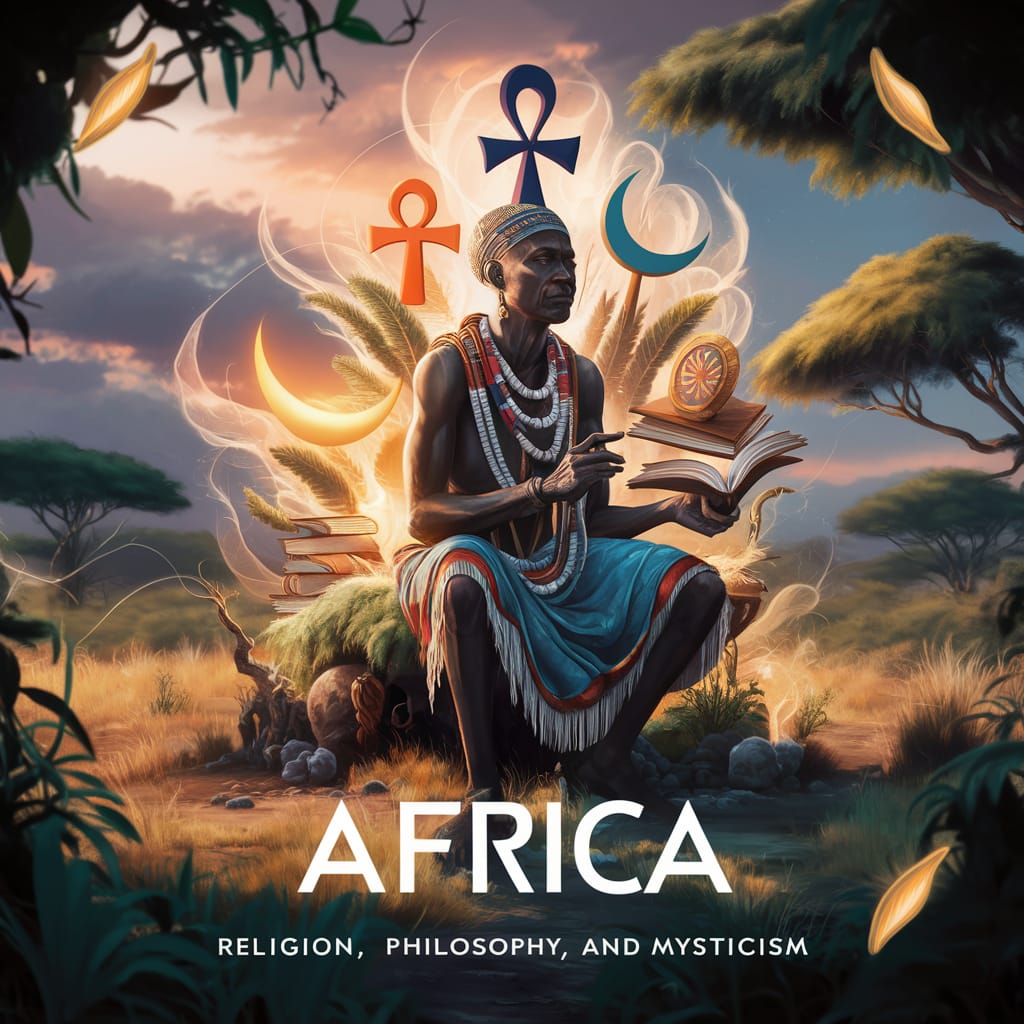The suppression of African mysticism by colonial powers was a deliberate and systematic effort to undermine indigenous cultures and replace them with European ideologies. This suppression stemmed from the perceived efficacy of African spiritual practices, which were seen as a source of social cohesion and resistance against colonial rule. The colonial approach combined legislative measures, missionary activities, and direct repression of key spiritual leaders and movements. Despite these efforts, African mysticism adapted and survived, continuing to play a vital role in the cultural and spiritual life of African societies.
African mysticism encompasses a rich tapestry of spiritual beliefs, practices, and traditions that have been integral to the cultural fabric of African societies for centuries. It includes a variety of rituals, ceremonies, and healing practices that are deeply rooted in the connection between the physical and spiritual worlds. African mysticism often involves the veneration of ancestors, belief in spirits and deities, and the use of divination to communicate with the unseen forces that influence everyday life. These practices are not merely religious but are intertwined with the social, political, and health aspects of the community, providing guidance, cohesion, and a sense of identity. Traditional healers, known as sangomas, babalawos, or ngangas, play a pivotal role in maintaining the spiritual and physical well-being of their communities. Their knowledge of herbal medicine, spiritual rituals, and the interpretation of dreams and omens is passed down through generations, forming a crucial part of the collective wisdom of African cultures. This mysticism is characterized by its holistic approach to life, where the material and spiritual realms are seamlessly interwoven, reflecting a worldview that honours the interconnectedness of all existence.
Legislative Measures and Policies
Colonial governments enacted numerous laws aimed at eradicating African mysticism. One prominent example is the Witchcraft Suppression Act in South Africa, introduced in 1957. This law criminalized a wide range of traditional practices, including divination and healing, under the guise of preventing witchcraft. Similar legislation was passed in other colonies. In Kenya, the British colonial administration enforced the Witchcraft Ordinance of 1925, which targeted traditional healers and spiritual leaders, branding their practices as fraudulent and dangerous.
These laws were often accompanied by policies designed to promote Western cultural and religious values. Colonial education systems, for instance, systematically undermined indigenous knowledge systems. Traditional African religious practices were often dismissed as superstition, while Western science and Christianity were presented as superior alternatives. This cultural imperialism sought to reshape African societies in the image of the colonizers, erasing indigenous identities and practices.
Missionary Activities
Christian missionaries played a pivotal role in the suppression of African mysticism. Supported by colonial governments, missionaries aimed to convert African populations to Christianity, viewing traditional spiritual practices as obstacles to their evangelizing mission. Missionaries often portrayed African mysticism as “pagan” and “heathen,” actively discouraging or outright prohibiting its practice.
In many regions, missionaries established schools and churches that became centres for the dissemination of Western religious and cultural values. For example, in Southern Africa, missionaries worked closely with colonial authorities to ban traditional ceremonies and the use of indigenous languages in religious contexts. This not only suppressed African mysticism but also disrupted the transmission of cultural knowledge and practices to future generations.
Key Events: The Maji Maji Rebellion and Nehanda Charwe Nyakasikana
The resistance of African communities to colonial suppression often led to brutal reprisals. The Maji Maji Rebellion in German East Africa (now Tanzania) in 1905 is a notable example. This uprising was partially fuelled by the use of traditional spiritual practices, particularly the belief in a magical water (maji) that would protect warriors from German bullets. The rebellion was met with extreme violence from the German colonial forces, resulting in the deaths of tens of thousands of Africans. This event highlighted the perceived threat that effective spiritual practices posed to colonial control.
Another significant figure in the resistance against colonial suppression was Nehanda Charwe Nyakasikana, a spiritual leader of the Shona people in what is now Zimbabwe. During the First Chimurenga (1896-1897), Nehanda played a crucial role in mobilizing resistance against British colonial rule. Her spiritual leadership and influence were seen as a major threat by the colonial authorities, who ultimately captured and executed her in 1898. Nehanda’s legacy endures as a symbol of resistance and the enduring power of African mysticism.
Impact on African Societies
The suppression of African mysticism had profound and lasting impacts on African societies. Traditional spiritual practices were integral to the social fabric, providing a sense of identity, community, and continuity. The colonial assault on these practices aimed to dismantle this social cohesion, making it easier to impose foreign rule and control.
However, African spiritual traditions proved remarkably resilient. In many cases, these traditions adapted to the new realities imposed by colonialism. Syncretic religions emerged, blending African spiritual elements with Christianity. For example, in the Americas and the Caribbean, religions such as Vodou, Santería, and Candomblé maintained African spiritual elements despite the pressures of colonial and later societal norms.
In Africa itself, traditional practices often went underground, continuing in secret or being incorporated into ostensibly Christian practices. This adaptation allowed African mysticism to survive and even thrive in new forms. For instance, in Nigeria, Yoruba religious practices persisted under the guise of Christian worship, leading to the development of syncretic movements like Aladura Christianity.
Conclusion
The historical suppression of African mysticism by colonial powers was driven by the recognition of its efficacy in maintaining social cohesion and resisting foreign domination. Through legislation, missionary activities, and direct repression of spiritual leaders, colonial authorities sought to dismantle these powerful traditions. Despite these efforts, African mysticism demonstrated remarkable resilience, adapting and surviving in various forms. This enduring legacy underscores the profound importance of spiritual traditions in the cultural and social life of African communities, serving as a testament to their resilience and adaptability in the face of systemic suppression.

